How to Get Rid of Dark Spots
Introduction
Dark spots, also known as hyperpigmentation, are a common skin concern for many people. These darkened patches on the skin can appear on the face, hands, arms, or any other area that gets frequent sun exposure. Dark spots result from an excess production of melanin, the pigment that gives skin its color. While harmless, these spots can make the complexion appear uneven and aged.
Getting rid of dark spots once and for all requires diligence, but it can be done. This article will explore the various causes of hyperpigmentation, proven methods for fading and preventing dark spots, medical treatments, and how to determine if a spot may need a doctor’s care. By better understanding the reasons behind these skin issues and taking the right approach, you can reveal a more even, radiant complexion.
Main Causes of Dark Spots
To treat and avoid dark spots, it helps to understand what’s causing them in the first place. Here are some of the most common culprits behind hyperpigmentation:
Sun Exposure
Dark spots brought on by the sun are sometimes called age spots or sun spots. Areas of skin that get frequent UV exposure from the sun see increased melanin production, which leads to uneven pigmentation and dark patches. Sun exposure is the #1 cause of dark spots in those over 40 years old.
Hormones
Hormonal fluctuations due to pregnancy, birth control pills, or hormone therapy medications can trigger excess melanin production that leads to dark patches on the skin. These hormone-induced dark spots are usually temporary.
Skin Injuries/Inflammation
Injuries to the skin - like acne, pimples, bug bites, cuts, or burns - can cause dark spots once they heal. The skin overproduces melanin during the healing process, leaving behind hyperpigmentation. Dark spots from past blemishes are called post-inflammatory hyperpigmentation.
Genetics
Some people are just genetically prone to producing more melanin and experiencing issues with pigmentation and dark spots. Those with darker skin tones are at a higher risk for developing hyperpigmentation.
Medications
Certain medications like chemotherapy drugs, antimalarials, anticonvulsants, and antibiotics can cause inflammation that leads to excess melanin production and dark patches on the skin. Always talk to your doctor about medication side effects.
Health Conditions
Serious health conditions like hormonal imbalances, autoimmune disorders, and metabolic conditions can trigger dark skin spots in some individuals. It’s important to rule out any underlying medical causes.
Proven Ways to Fade Dark Spots
Now that you know what causes those pesky dark spots, here are some proven ways to help fade hyperpigmentation and reveal brighter, clearer skin:
Sun Protection
Since sunlight is the #1 cause, diligent sun protection is a must to prevent new dark spots and keep existing ones from worsening. Apply a broad-spectrum sunscreen of at least SPF 30 every day, even when indoors. Avoid direct sun exposure, especially during peak hours. Wear protective clothing and a wide-brimmed hat when outside.
Exfoliation
Gently sloughing off the surface layers of the skin encourages new cell turnover. This helps fade dark spots faster by removing the damaged skin cells that contain excess melanin. Use a chemical exfoliant containing alpha hydroxy acids 2-3 times per week or try a gentle scrub with physical exfoliants like sugar or salt.
Vitamin C Serums
Topical vitamin C is a powerhouse for fading hyperpigmentation and limiting excess melanin production. Look for serums containing L-ascorbic acid, the most researched form of vitamin C. Apply it after cleansing and before moisturizing.
Retinoids
Retinoids (the umbrella term for retinol, retinaldehyde, adapalene, tretinoin, etc.) are vitamin A derivatives that boost collagen, speed cell turnover, and help even pigmentation. Available both over the counter and by prescription. Use them at night and be sure to wear sunscreen during the day.
Brightening Creams
Look for creams and serums with ingredients like niacinamide, licorice root extract, kojic acid, azelaic acid, arbutin, and more. These natural brighteners interrupt melanin production to help fade dark spots and improve skin tone.
Chemical Peels
In-office chemical peels performed by a licensed esthetician or dermatologist can dramatically speed up the fading of dark spots and hyperpigmentation. The right acids will remove the damaged outer layers of skin so newer, clearer skin emerges. Often used in combination with other treatments. Provides longer-lasting results than at-home peels.
Laser Treatments
For the most stubborn dark spots that don’t respond sufficiently to topical treatments, laser therapy performed by a board-certified dermatologist offers the best solution. Lasers target pigment in the skin and break it up, helping eliminate dark spots. Provides lasting improvements in 6-8 treatments but can be pricey.
Prescription Creams
For more severe cases, a dermatologist may prescribe a medicated cream containing hydroquinone. This bleaching agent works to fade dark spots but can only be used short-term due to side effects. Often prescribed along with retinoids and/or steroid creams. Use under medical supervision.
Lifestyle Tips to Prevent Dark Spots
In addition to treating existing spots, healthy lifestyle habits go a long way in preventing new hyperpigmentation from occurring:
- Eat a diet rich in antioxidants from fruits, vegetables, whole grains, and healthy fats. Nutrients like vitamin C fight skin damage from UV exposure.
- Stay hydrated and avoid excessive alcohol intake, which can impair skin renewal.
- Don’t pick at blemishes to avoid dark spots after healing. Keep skin free of injury.
- Manage stress levels through yoga, meditation, therapy, etc. Stress hormones impair skin health.
- Quit smoking, which causes collagen breakdown and pigmentation issues.
- Use self-tanning products instead of tanning beds or laying out in the sun. The tanning process causes melanin production.
- Get 7-9 hours of sleep per night. Rest is essential for cellular repair and turnover.
With diligent skincare, lifestyle habits, and the right dermatological treatments if necessary, you can win the battle against pesky dark spots. But when should you see a doctor? Let’s go over some signs it may be time for medical help.
When to See a Dermatologist
Most cases of dark spots and hyperpigmentation can be managed with over-the-counter products and diligent care. But in certain situations, it’s best to have your spots examined by a board-certified dermatologist:
- The spot is new or changing in size, color, shape, or texture
- You have a lot of dark spots suddenly appearing
- The spot itches, hurts or bleeds
- Home treatments have not improved the spots after 3-4 months
- You have risk factors like a family history of skin cancer
- The spot has an irregular border and is asymmetric in shape
- The discoloration is dark brown or black
- The spot is larger than 6 millimeters wide
When in doubt, it’s always safe to get spots checked by an expert dermatologist, especially if they are new or changing. Early diagnosis and treatment are key for any potential skin malignancies. You and your doctor can then determine the best course of action whether that involves medicated creams, laser therapy, or biopsy for further testing.
Medical Procedures to Remove Dark Spots
In cases where over-the-counter treatments fail to provide sufficient improvement, a dermatologist has medical tools and procedures at their disposal to safely eliminate dark spots and hyperpigmentation. Common in-office treatments include:
Laser Therapy
As previously mentioned, laser treatments are considered the gold standard for removing stubborn pigmentation. The beams of light target and break up the melanin clusters. Several repeat sessions are usually needed for optimal results.
Chemical Peels
Medical-grade chemical peels involve applying a stronger acid solution to the skin under medical supervision to peel away pigmented layers. Deeper peels must be performed carefully to avoid complications but provide longer-lasting improvement.
Dermabrasion
This procedure uses a rotating brush, laser, or other abrasive instrument to remove the top layers of skin. New skin then forms minus the darkened patches. Works best for raised dark spots. Requires sedation or local anesthesia.
Cryosurgery
Liquid nitrogen is applied to dark spots to essentially freeze and destroy the extra pigment. Some redness, swelling, blistering, and crusting occur post-treatment as the skin heals. Several sessions may be necessary. Minimal scarring can occur.
Microdermabrasion
A gentler option, microdermabrasion uses a handheld wand that sprays out fine crystals to gently “sand” away the outer skin layers. Encourages new collagen and elastin while removing pigmentation. Little to no downtime is involved.
Intense Pulsed Light Therapy
Intense pulsed light works similarly to laser therapy by targeting melanin with pulses of light energy. However, it treats a larger surface area faster than a traditional focused laser. May require multiple treatments.
With the variety of medical procedures available from dermatologists, even the most stubborn dark spots and hyperpigmentation can be resolved. Just be sure to carefully follow your doctor’s post-procedure instructions to allow the skin to properly heal.
Home Remedies to Fade Dark Spots
For mild cases of dark spots, home remedies can help lighten pigmentation when used consistently over time. Natural ingredients to try at home include:
- **Lemon juice** - Contains skin-brightening citric acid. Dip a cotton ball in juice and dab onto spots 2-3 times a week. Rinse after 30 minutes.
- **Yogurt** - Lactic acid exfoliates while zinc and B vitamins decrease melanin production. Apply a thin layer to spots daily.
- **Apple cider vinegar** - Antimicrobial and exfoliating. Mix equal parts vinegar and water and pat onto dark spots with a cotton ball. Rinse after 20 minutes.
- **Onion juice** - Contains pigment-inhibiting phytochemicals. Rub raw onion slices on clean skin, then rinse. Can also apply extracted juice.
- **Aloe vera gel** - This soothing succulent inhibits melanin. Break open a leaf and rub the gel on spots.
- **Buttermilk** - Exfoliates and bleaches skin due to lactic acid content. Dip a cotton ball and dab it onto spots. Let sit 20 minutes before rinsing.
- **Papaya** - Papain enzyme and vitamin C in papaya lighten dark patches. Mash ripe papaya pulp and apply to the skin for 30 minutes.
- **Potatoes** - Contain mild acid that fades spots along with vitamins C and B. Grate a potato and rub the pulp onto clean skin. Rinse after 20 minutes.
Take care using home remedies if you have sensitive skin. Test patches first and don’t use lemon juice or vinegar remedies before sun exposure due to photosensitivity risks. For many, natural solutions can meaningfully improve the appearance of dark spots when used regularly over time.
How to Cover Up Dark Spots
While working to fade dark spots for good, you can temporarily conceal them with makeup:
- **Color corrector** - Apply green-tinted primer only on the dark spots to neutralize redness before foundation.
- **Full-coverage concealer** - Dab concealer directly onto the spot and use a damp sponge to blend edges seamlessly.
- **Foundation** - Opt for a slightly thicker, buildable medium or full coverage foundation formula to hide spots. Avoid anything too sheer.
- **Setting powder** - Dust on mineral powder to lock in coverage and reduce chances of makeup sliding off spots.
- **Sunscreen** - Set the whole look with a makeup setting spray or powder containing SPF to protect dark spots from worsening. Reapply sunscreen every 2 hours if spending time outside.
With the right color-correcting products and application techniques, you can mask dark spots beautifully. Just be sure to remove makeup fully at night with a gentle cleanser to keep skin clear.
Can Dark Spots Be Prevented?
While you can’t avoid getting the occasional dark spot as you age or experience an acne breakout, certain measures can reduce your risks of developing extensive hyperpigmentation:
- Wear broad-spectrum sunscreen daily and limit direct sun exposure. This is the #1 preventative step.
- Incorporate skin-brightening antioxidants like vitamin C into your routine. They inhibit melanin synthesis.
- Use chemical exfoliants and retinoids to accelerate skin cell turnover so dark-spotting pigment doesn’t linger.
- Avoid picking pimples and scabs which can cause post-inflammatory hyperpigmentation after healing.
- Treat any underlying conditions, like hormonal imbalances, that may trigger excess melanin production.
- Eat a healthy diet full of antioxidants and vitamins like vitamins A, C, and E that fight free radical damage to the skin from UV exposure and other pollution.
While you can’t prevent all dark spots, diligent sun protection, healthy skin habits, and prompt treatment of any pigmentation issues can help minimize their occurrence and severity.
When to Worry About Dark Spots
Most instances of dark spots or hyperpigmentation are harmless. However, atypical moles or pigmented lesions on the skin should be examined promptly. Contact a dermatologist right away if you notice any spots that:
- Change size, shape, or color over time
- Itch, ooze, or bleed
- Have an irregular border with a mix of colors
- Occur suddenly in large numbers all over the body
- Are larger than 6 millimeters wide
- Are dark brown or black
Catching any potential malignancies like melanoma early is critical for effective treatment. Don’t hesitate to get a spot checked out that exhibits any unusual characteristics or changes rapidly. Regular skin self-exams are important for early detection.
Conclusion
In summary, dark spots and hyperpigmentation are common cosmetic concerns that occur due to various factors like sun exposure, hormones, inflammation, and genetics. Thankfully, there are many proven ways to treat existing spots and prevent new ones from forming. Consistent, diligent skincare and sun protection can help fade dark spots over time. In-office procedures from dermatologists provide faster results for stubborn pigmentation.
While being vigilant about changes to any dark spots on your skin, try not to become overly discouraged by their appearance. Nearly everyone battles some level of uneven pigmentation and dark spots, especially with age. Just be diligent about sunscreen use, incorporate brightening products into your skincare routine, and see a dermatologist if any spots seem atypical. With the right plan, you can achieve beautifully clear, even-toned skin free of unwanted dark spots.
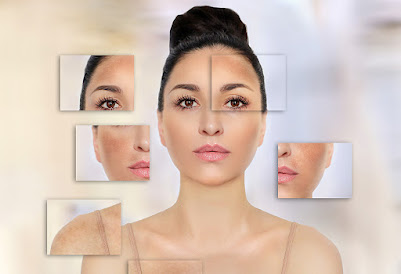
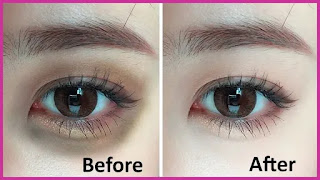
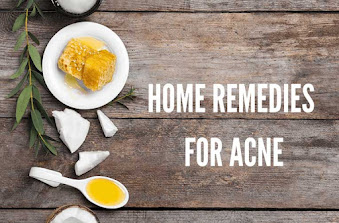
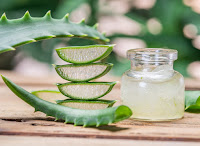

.jpeg)

.jpeg)
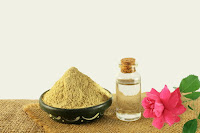


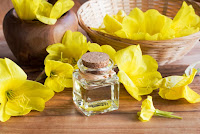
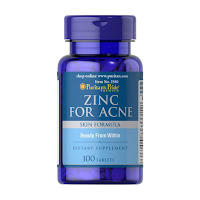
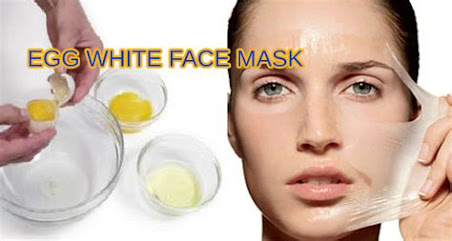


.jpg)